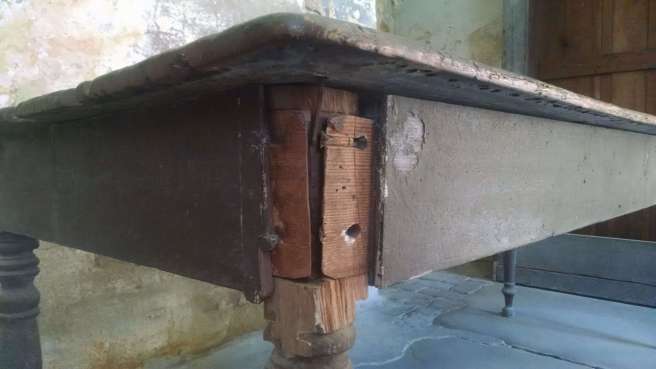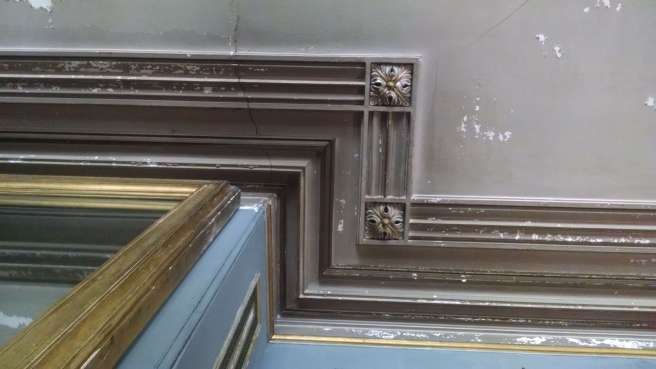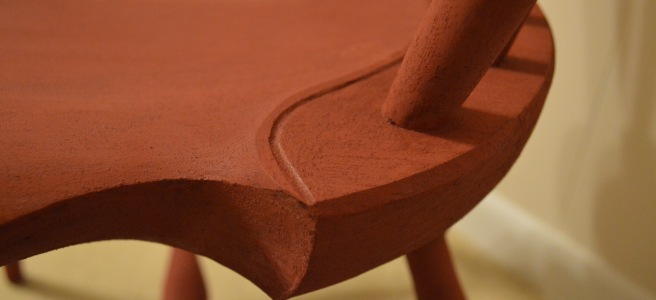You have to work for it.
At least, that’s my experience. Maybe that means I’m not very creative. Actually, I’m quite certain that I’m not very creative. I am analytical to a fault, and indeed, many of my blog series (The Name of the Grain and Woody Wednesday, for example) as well as my job title (Forest Resource Analyst) reflect that. Perhaps that’s why I naturally gravitate towards historical furniture forms. There is something comforting about building furniture in a tradition that incorporates the evidence of a thousand years of failures and successes. Why re-invent the wheel when it’s already been refined by countless generations of craftsmen more competent in their trade than I can ever dream of being?
More often than not, when I find myself departing from tradition, it’s to accommodate a special piece of wood that simply doesn’t fit into the classical canon of furniture forms. Such is the case with my current project. My dad asked me to build an end table. He already had the wood picked out for the top – a slab of white oak 15″ wide, 40″ long and 1-5/8″ thick. It’s a lovely piece of wood, cut from a crotch with plenty of flame figure – but it also has plenty of defect.
The wood was cut in a manner that is opposite from the way that a crotch would normally be sawed. Woods like walnut, cherry, and birch normally display the best figure when the crotch is sawed, as my old friend Tom would say, “like a pair of britches lying flat on the floor” – with each fork representing a leg. Oak, on the other hand, usually presents the best figure when the wood is sawed perpendicular to the customary orientation.

The problem with this method is that it includes the pith in every flitch. Anyone who has ever sawed their own hardwood lumber is well aware of the problems with the pith. The juvenile wood immediately adjacent to the pith often has a life of its own, bending and twisting as it dries. And the nature of wood shrinkage means that the odds are good that you’ll have cracks in any board that includes the pith. My dad’s slab was no exception.

Fortunately, the slab was large enough to salvage a sizable chuck of wood while completely discarding the pith. The result was an elliptical tabletop, 13″ wide and 24″ long.

The problem, at this point, was that I had very little historical precedent to work with for designing the base. Oval end tables – especially tables that utilize a piece this thick – are scarce. Now, this isn’t the first time I have found myself in “modern furniture” territory. I detailed my design process for my tripod kitchen table in the early annals of this blog. Basically, it involved typing some descriptive keywords into a Google image search, plucking out a few designs that I really liked, and modifying them to suit my preferences. In this case, however, Google was of no help, and I found myself starting from an empty slate.
So, I did the only thing a non-creative person can do in this situation: I sharpened my pencil and got to work. I started sketching stream-of-consciousness until I stumbled upon an idea worth pursuing. I’ll warn you, the process (or maybe just my sketching ability) isn’t pretty:
Most of the sketches belong exactly where they are: on the cutting room floor. But I thought that the sketch at the bottom right of the first page had potential, so I explored it further on a second page, playing around with the dimensions of the members as well as the horizontal and vertical proportions of the whole structure. I really liked the way the curves flowed through the joinery and the arch at the bottom reflected the ellipse of the top. I decided this design was the winner.

It was time to make full-size drawings – a step that I rarely take, but I felt that it was necessary to get a realistic idea of the proportions. My first iteration, with 3″-wide members, was a bit to heavy, so I revised the drawing to 2″ members. That looked right to my eye, and I was satisfied enough with this drawing to begin the painstaking process of animating the idea in ligneous flesh.

But as always, the ultimate question is not “Does it look good on paper?”























































































